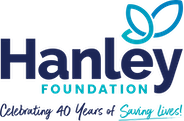By Hanley Prevention Specialist Caleb Akers
There is a wealth of research available which confirms that parents are the most effective yet underutilized tool regarding their children abusing substances. Parents’ influences are the first line of defense in the home and can be exerted through many different avenues (Kelly et al., 2002).
For prevention to be achieved in the home, parents must have a utility belt per se with many different tactics and strategies.
Parents need to communicate their values concerning substance abuse and make sure that their child understands that these values are not parental values but rather family values that are expected to be kept. Parents need to set their expectations clearly and firmly so that there is zero confusion about what is to be expected. This action takes a significant commitment on the parents’ part because not only do the values and expectations concerning substance use need to be understood and followed, but the parents must continue to monitor and enforce these family policies.
It’s not enough to sit back and say that you did your part by telling them what you expect.
Communicating these directives is just the beginning. It would be like setting fire to stick and sitting back only to wonder why the fire went out in a few minutes. This is not a “set it and forget it” scenario. Prevention education in the home takes to follow through and maintenance. It is the parent’s responsibility to continue feeding the fire. Without consistent commitment, the fire will die, and the child will be left to their own devices. It is a fact that teens who learn about risky behaviors and drugs from their parents in the home are as much as 50% less likely to experiment with drugs. Parents underestimate the power that they have when it comes to the prevention of drug and alcohol use with their children. There are many studies which, through evidence-based research methodologies, have concluded that alcohol and drug abuse by youth is a direct result of parental inaction. This means parents are producing weak levels of child monitoring and value enforcing, etc.
When parents supervise or monitor their child’s activities in and out of the home, they increase the likelihood of their child avoiding high-risk situations such as using alcohol or drugs.
This could be as easy as waiting up for them to return home to see their appearances visually and to discuss their activities. This creates accountability and the sense that the child will never be able to come and go as they please with no level of accountability. When parent’s engage in open communication practices with their children, they significantly reduce the likelihood of their child engaging in antisocial activities such as drug and alcohol use. They also are more likely to engage in prosocial peer relationships and become involved in healthier extracurricular activities.
Statistically speaking, parents are not as “awake” as they believe in their child’s substance influences and experimentation.
In a survey of parents with substance-abusing children in the home, 51% of parents suspect their children to have a friend who uses marijuana. In comparison, almost 70% of young people said they had at least one friend actively using marijuana. In a similar survey, only 18% of parents believed their child had experimented with marijuana when in actuality, 41% of children said they had tried marijuana at least once.
Finally, parents were surveyed, and 39% of parents believed that their child thought there were significant risks in trying marijuana when in reality, only 16% of young people felt there were any risks associated with using marijuana just once.
Parents need to wake up and see that their thoughts about their children’s experimentation and drug knowledge are not what it is in reality.
Parents who have reported their children to have a more tolerant and permissible attitude towards drugs and alcohol are often the ones seeing the more massive usage of these substances by their child. The youth who have no fear of consequences or see any real risk in trying alcohol or drugs are the ones experiencing more negative effects. However, this cannot be wholly blamed on the child as research has concluded that much of the activity and thinking of the child is due to parent-related factors (Napper et al., 2016).
There are a few proven things that parents could implement for greater prevention in and out of the home for their children.
The first would be parent support. The child must feel that the parent is there for them, not just physically, but emotionally too. Parents must also monitor their children’s friendships and activities. Keeping a close eye on who they are hanging out with and what they are doing is essential. Finally, a more intimate relationship between the parents and the child is vital to prevention efforts. The child needs to feel that he/she can openly communicate with their parents. These steps are associated with less drug and alcohol use in young people.
The benefits of prevention could echo for generations and not only reduce behavior problems and drug usage, but also promote the lifestyles of health and well-being. There are many studies conducted that predict the usage of drugs and alcohol-based on the parents’ usage of these drugs and alcohol (Bailey et al., 2006). Using drugs and alcohol is a family issue as it can affect everyone. Therefore, every member of the family must be equipped with the right tools to see the benefits of prevention and evidence-based education. The main thing to take away is there are a plethora of resources for parents to make these topics more comfortable to manage and to discuss.
References
Bailey, J. A., Hill, K. G., Oesterle, S., & Hawkins, J. D. (2006). Linking substance use and problem behavior across three generations. Journal of Abnormal Child Psychology, 34(3), 263-92. http://dx.doi.org/10.1007/s10802-006-9033-z
Kelly, K. J., Maria Leonora, G. C., & Hunn, L. C. P. (2002). Parent-child communication,
perceived sanctions against drug use, and youth drug involvement. Adolescence, 37(148), 775-87. https://search.proquest.com/docview/195942019?accountid=35796
Napper, L. E., Froidevaux, N. M., & Labrie, J. W. (2016). Being blunt about marijuana: Parent communication about marijuana with their emerging adult children. Prevention Science, 17(7), 882-891. http://dx.doi.org/10.1007/s11121-016-0681-0


